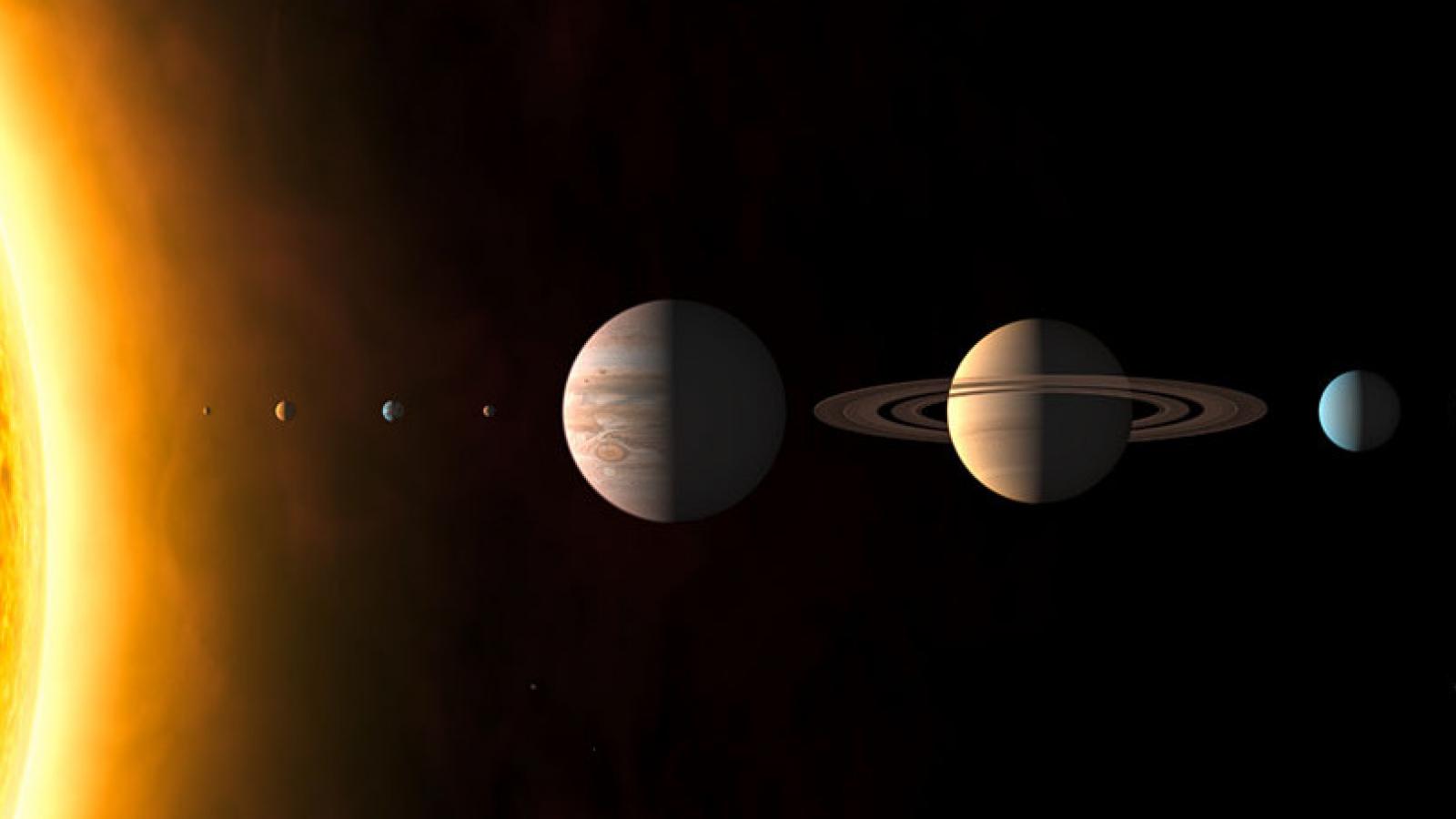Why are there seasons?
Is there water on Mars?
Is Pluto a planet?
Are there planets around other stars?
Astronomy 1140, Planets and the Solar System, is a one-semester course on the physical nature of the Sun and its family of planets, satellites, comets and minor bodies; gravitation, light, and telescopes. It is a General Education (GE) Physical Science course in the Natural Science category. The goals of courses in this category are for students to understand the principles, theories, and methods of modern science, the relationship between science and technology, the implications of scientific discoveries and the potential of science and technology to address problems of the contemporary world.
This course begins with an exploration of the historical development of astronomy to trace the path by which we have come to our present understanding of the universe, developing along the way the basic set of physical concepts that we will need for our later discussions. The second part of the course is devoted to an overview of modern solar system astronomy, with particular emphasis on the constituents of the solar system, comparative planetology (structure, surfaces, & atmospheres), and the history and evolution of the solar system. Finally, we explore the on-going search for exoplanets: planets around other stars, and how the discovery of many thousands of planetary systems in recent years is challenging our ideas about how planetary systems form, and our notions about how typical our solar system really is.
Course Objectives
By the end of this course, students should successfully be able to:
- Understand the basic facts, principles, theories, and methods of modern science.
- Understand key events in the development of science and recognize that science is an evolving body of knowledge.
- Describe the interdependence of scientific and technological developments.
- Recognize the social and philosophical implications of scientific discoveries and understand the potential of science and technology to address problems of the contemporary world.
Astronomy 1140 will meet these expected outcomes by covering these major topics:
- Practical Astronomy:
How the Earth, Moon, Sun, stars, and planets appear to move and how people explained these motions. This section culminates in the geocentric model accepted by the ancients. - The Copernican Revolution:
The heliocentric model and the accompanying revolution in physics, the contributions of Copernicus, Tycho, Kepler, Galileo and Newton in developing an accurate description of how bodies in the Solar System move, Kepler's Laws, Newton's Laws, and the basic properties of light. - The Inner Solar System:
The origins, evolution, and important global properties of the Solar System. Comparative planetology of the Terrestrial planets, using the Earth as a template, studying geology first and then atmospheres, and ending with the asteroids and what they tell us about the formation of the solar system. - The Outer Solar System:
The gas giants and ice giants, along with their extensive ring and moon systems, and the numerous small icy bodies in the Kuiper belt and Oort cloud. Our model for the formation and evolution of the solar system, revealing the violent early history of our dynamic solar system which has undergone episodes of large-scale migration and rearrangement. - Extrasolar Planets:
The search for planets around other stars, how we find them, what their properties are, and how some of the exotic systems we've found have forced us to rethink how solar systems form and evolve. We will end with a discussion of life in the Universe and of how typical our solar system is.
Among the questions that you should be able to answer by the end of the course are the following:
- What are the origins of the seasons?
- How have celestial motions given us the basis of our time-keeping and calendar systems?
- How did the rise of science correspond with our understanding of the true nature of planetary motions?
- What are the physical laws that describe planetary motion, and how did we come to understand them?
- What is the architecture of our solar system?
- What are the different types of bodies that make up our solar system? What are their similarities and differences?
- How do we find planets around other stars?
- How do the solar systems of other stars compare to our system?
Course Organization
This is a 3 credit hour course; each week, there will be 3 hours of lecture, with occasional take-home assignments designed to explore some of the course topics in greater depth. For Arts and Sciences students in a Bachelor of Arts program, this course meets the Arts and Sciences GE requirement of a natural sciences course without a laboratory component.
Course Catalog Description
Physical nature of the Sun and its family of planets, satellites, comets and minor bodies; gravitation, light, and telescopes. Not recommended for students who plan to continue in astronomy or physics.
Prerequisites:
ACT Math Subscore of 22 or higher, or Math Placement Level R or better, or Math 1050 (075) or 102, or permission of instructor. Not open to students with credit for 1161 (161), 1161H (161H), 2291 (291), or 171. This course is available for EM credit.
GEL Natural Science: Physical Science course. NS Admis Cond course.

